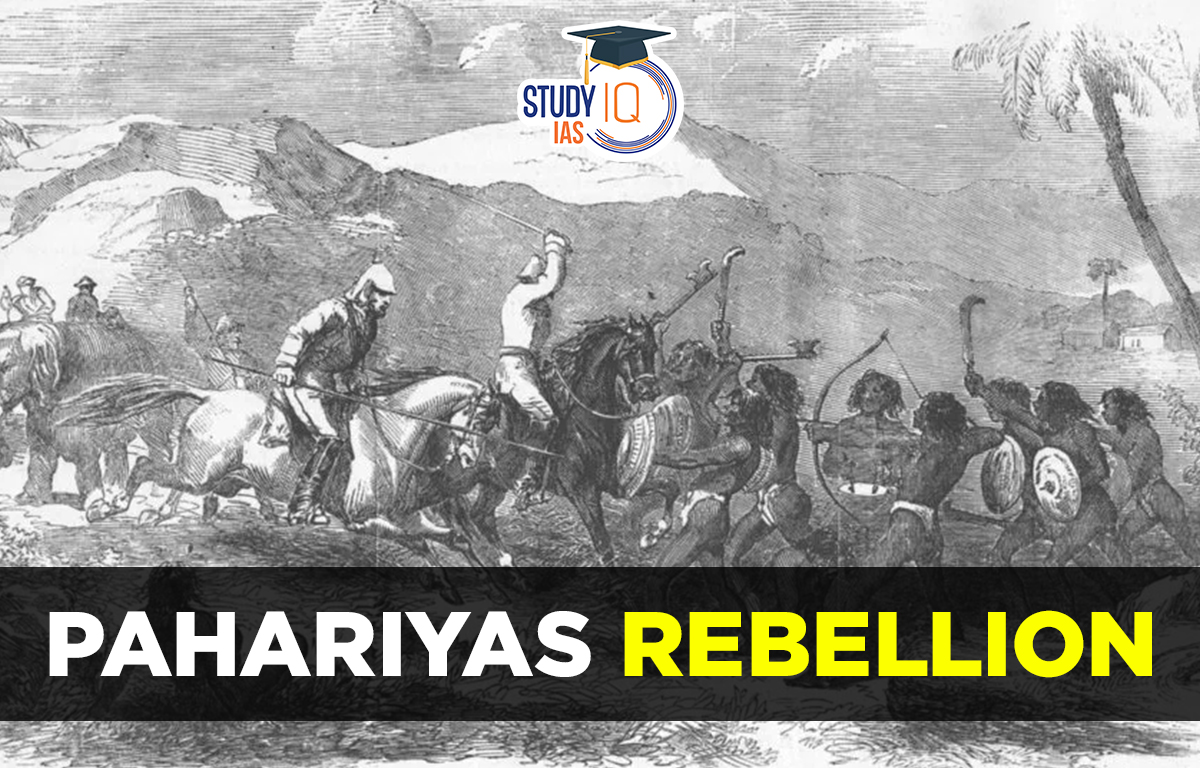Table of Contents
Pahariyas Rebellion
Raja Jagganath led the Pahariyas rebellion in 1778, which is notable because it was against the British, who had waged a terrible campaign against the Pahariyas, slaughtering and hunting them down. The hill dwellers who lived close to the Rajmahal hills were known as Pahariyas. They engaged in shifting cultivation and subsisted on foods found in the wild. The Pahariyas started conducting frequent raids against established communities. You will learn about the Pahariyas Revolt (1778) in this article, which will help you prepare for the UPSC Civil Service Exam.
Read More: Paika Rebellion
Pahariyas Rebellion History
In the Rajmahal Hills in Santal Pargana, there was a tribe known as the Pahariyas. They had practically maintained independence before British control in India began. These people were hostile to outsiders and believed the entire region to be their nation. Prior to the coming of the British, the Paharias had always maintained their independence due to their geographic isolation.
The Paharias Rebellion often pillaged the plains occupied by established farmers because they lacked adequate means of subsistence, particularly during famines. These incursions were also used as a show of power over the established communities. Similar to how traders paid hill lords to use their controlled passageways, lowlands zamindars usually paid a regular tribute to the Pahariyas to buy peace.
But, as established agriculture expanded in eastern India and the British pushed for the destruction of forests, this pretty flimsy peace treaty disintegrated in the late eighteenth century. Conflict between hill dwellers and settled cultivators resulted from the reduction of the area under woodlands and meadows caused by established agriculture.
The Pahariyas started conducting frequent raids against established communities. The Brits waged a ruthless campaign against the Pahariyas in the 1770s, tracking them down and killing them. A notable uprising was the Pahariyas uprising in 1778, which Raja Jagganath led. In order to ensure that their forces behaved appropriately, Pahariya leaders were given an annual stipend by the British as part of their pacification strategy in the 1780s. The majority of Pahariyas disagreed with this rule.
In order to ensure that their forces behaved appropriately, Pahariya leaders were given an annual stipend by the British as part of their pacification strategy in the 1780s. The majority of Pahariyas disagreed with this rule. To continue the fight against the diku, or “outsiders,” some of them retreated far into the highlands, away from the opposing army.’
Read More: Kuka Movement
Pahariya People
The Rajmahal Hills, also known as Pahariya, in the northeastern Chota Nagpur Plateau, are home to the Dravidian tribe known as the Malto or Maler. Their three subgroups are the Mal Pahariya, Sauria Paharia, and Kumarbhag Paharia. All three are considered Scheduled Tribes in Jharkhand, Bihar, and West Bengal. They communicate in Malto, a language related to the Kurukh dialects heard nearby. When the British first encountered them, they were nomads.
They were jhum farmers, hunters, and collectors who frequently invaded Bengal or Bihar’s plains to the east or north before withdrawing back into the jungle. If there was a crop failure, a fatality, or any other calamity, they would move. Due to their isolated location, none of the numerous dynasties who claimed to rule the area ever succeeded in capturing them. When the Brits ordered the Santals to farm the Rajmahal Hills, the Maltos resisted, but they were eventually driven away.
Read More: Chuar Uprising
Pahariya Revolt
Regions in Rajmahal, Godda, and Pakur were home to the Pahariya tribe. In the history of tribal revolts against the British, their uprising is regarded as the first significant uprising. In 1766, 1772, and 1781–1782, this tribe resisted the British on numerous occasions. Ramna Aahdi served as their leader during the uprising of 1766. Several leaders perished in the 1772 uprising, including Changrun Sanwariya, Pachge Domba Paharia, and Kariya Pulhar.
Pahariyas chiefs supported the rebellion of queen Sarveshwari, the wife of king Maheshpur, against the British in 1781–1782. In this area, many Santhals were emigrated by the British between 1790 and 1810. Even when the Paharias lost majority status, their movement persisted. To put an end to the uprising, the British designated the Pahariyas’ land as Damin-e-Koh and declared it government property in 1827.
Read More: Tribal Movements in India
Pahariya Rebellion UPSC
The Rajmahal Hills of Santhal Pargana are home to the Maale, also referred to as the Sauria Pahariyas. They had practically maintained independence before British control in India began. The British effort to placate the Pahariyas is largely documented in the early history of colonial Rule in Rajmahal. They had to rely on hunting to supplement their meagre corn and lentil crops.
Read More: Ahom Revolt


 Maharashtra’s Mendrachi Vancharai Syst...
Maharashtra’s Mendrachi Vancharai Syst...
 Keeladi Excavation: Uncovering the Ancie...
Keeladi Excavation: Uncovering the Ancie...
 Sanyasi Revolt, Objectives, History, Rea...
Sanyasi Revolt, Objectives, History, Rea...





















